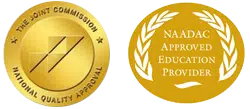The first step in addiction treatment is removing toxic chemicals, drugs, alcohol, or both from your system. The first few days after people decide to quit and get sober are often the riskiest, physical and emotional. The discomfort of detox and the overwhelming emotions that often come with quitting drinking or drugs can easily make even the most determined person decide to use again to blunt those feelings. Medically assisted detox is a common way to safely detoxify from alcohol and drugs but depending on your level of addiction and what you were addicted to, it can take up to a week to complete.
Some people may be curious about rapid detox, which could reduce the lengthy, uncomfortable, and painful detox process. However, there are some pros and cons to this, which we’re exploring below. And, it may not be right for everyone – always consult with a doctor or medical care provider specializing in addiction before you start a rapid detox.
What is Rapid Detox and How Does it Work?
Essentially, rapid detox is just what the name says: rapidly detoxifying from drugs and alcohol. It’s completed by placing the patient under anesthetic sedation and then intravenously administering Naltrexone or another opioid antagonist. The drug blocks the body’s opiate receptors and forces the body to detox immediately. Patients may also receive medications to reduce nausea or prevent seizures.
Ideally, when a patient wakes up after being sedated, they should be through detox and free of withdrawal symptoms. But, many people report still feeling nauseous, in pain, or craving their drug of choice. Rapid detox is the most common detox:
- Heroin and other opiates
- Prescription painkillers
- Certain narcotics
It can be very effective for opiate detox since Naltrexone acts directly on opiate receptors, but there are still risks of relapse after the patient awakens, as well as severe health complications that could even be deadly. It’s a medical procedure best performed by qualified, experienced professionals.
The Effectiveness of Rapid Detox
Rapid detox takes less than 24 hours, and many people consider this procedure a quick solution to sobriety, especially since you’re essentially sleeping through the process. However, simply removing drugs from your system isn’t the end of drug rehabilitation. Detox is clearing your mind of intoxicating substances so you can start recovery.
The physical side effects are one concern about the efficiency of rapid detox. The relapse rate is another one. If rapid detox is the only treatment method, then the chances of a relapse are high. It’s an appealing treatment for many people because it quickly cleanses them of physical addiction. But, when treatment is rushed, the opportunity for learning about the nature of addiction and the life skills needed for recovery is limited. One of the reasons that 30, 60, and 90-day treatment programs are more effective is because clients are learning about themselves and their triggers, working through past trauma that drugs and alcohol helped them numb or mask, and gaining the self-worth and confidence in themselves to believe that they deserve sobriety and healthy life.
How Safe is Rapid Detox?
Although rapid detox can be quite effective at cleaning the body of drugs, especially opiates, the safety can vary wildly from patient to patient. The treatment involves administering a very high dose of Naltrexone, and while it’s a common medication used in medically-assisted detox for drugs and alcohol, those programs involve much lower doses.
Another concern about the safety of rapid detox is that the speed is similar to quitting cold turkey. People with severe addictions or those detoxing from alcohol or benzodiazepines may be more at risk for deadly side effects from rapid detox than a slower detox. Some risky symptoms of rapid detox for people with severe addictions include:
- Heart problems, like irregular heartbeat or heart palpitations
- Respiratory failure or aspiration
- Delirium, or DTs
- Suicidal ideation or attempts at self-harm
- Psychosis, auditory, and visual hallucinations
Some people may slip into a coma or even die after rapid detox, so if it’s something you’re considering, you and your doctor need to carefully evaluate your overall health and whether detoxing in 24 hours versus 72-96 is a better option.
Even after the detox treatment is complete, patients may experience serious mental and emotional side effects, such as depression and anxiety, especially if they have an underlying condition, fatigue, mood swings, and paranoia or disorientation. These “residual withdrawal” symptoms can cause a person to start using again, seeking to alleviate the emotions flooding in.
Do You Need Detox or Drug and Alcohol Rehabilitation?
We can help. Baystate Recovery Centers provides safe, compassionate treatment, no matter how severe your addiction is. We partner with local medical detoxification facilities to help people safely wean off their addictive substances, and once your mind is clear, you can begin the work of recovery. We offer intensive outpatient therapy, day programs, and family therapy to help you rebuild relationships. Contact us today to learn more about our programs!
Baystate Recovery Center, a clinically Infused 12-Step Treatment Center for Drug and Alcohol Addiction, was founded by two partners in addiction treatment services, John Checchi and Michael Wilson.



